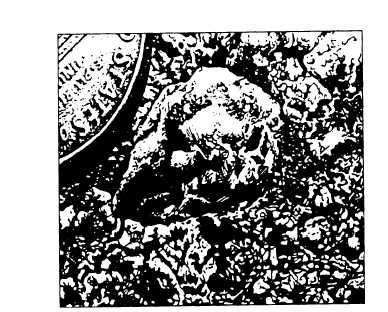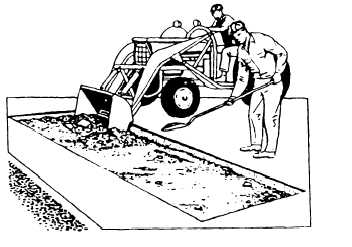Figure 16-24.—Polished aggregate in pavement surface.
REPAIRING DEFECTIVE FLEXIBLE
PAVEMENTS
Care and good judgment are necessary in applying
suitable methods and in selection of proper materials for
maintenance and repairs of bituminous surfaces. Both
methods and materials vary considerably with local
conditions, but the principles of bituminous work
remain the same. The first step in making repairs is to
determine the cause of the failure. Repairs must start at
the source of the failure.
Removing Defective Flexible Pavement
The first step in removing a defective area is to mark
out the area you want to remove. If you are going to use
a pavement saw to cut the pavement, make your marks
heavy and easy to use. The marks should be made with
a waterproof material, such as paint or crayon, to prevent
it from being washed off by the saw blade. The shape
of the patch is important. If you expect the patch to be
strong enough to support traffic, you must make the
marked area square or rectangular in shape with two
faces at right angles to the flow of traffic. By doing this,
you will ensure the patch does not shove or corrugate
when traffic flows over the top of it.
PAVEMENT CUTTING.— After you mark the
area you want to remove, you are now ready to make
your cuts along the marks. You can do this by using a
pavement saw to make a fast, neat cut or by using a
pneumatic hammer with a 5-inch asphalt cutting bit.
When the pneumatic hammer is used, it leaves the edges
of the patch jagged. When making the cut with either
tool, make sure the patch has square edges and is
rectangular in shape. The cut should also extend at least
a foot into the good pavement.
PAVEMENT REMOVAL.— After the outline cuts
have been made, you can begin to breakup the defective
material with a pneumatic hammer. Break the pavement
into pieces that can be removed easily by hand. If the
pieces are too large, a front-end loader maybe required
to remove them. After the pavement has been broken
up, the pieces can then be removed and hauled away
(fig. 16-25).
After the pavement has been removed, check the
condition of the base course material. When the base
course is saturated with water, this material should be
removed until you reach firm, dry soil. The sides should
be vertical and the bottom as level as possible.
Base Course Replacement
After the hole is excavated, clean out all loose debris
with hand brooms. When the hole is wet, it must be
allowed to dry.
When the hole is deeper than the
pavement, it should be filled with dense-graded
aggregate. Fill and compact it in 2-inch lifts up to the
lower edge of the pavement. On large patches,
compaction can be done with a roller. Small patches
must be hand-tamped. On large patches, the edges must
be hand-tamped.
NOTE: Specification may require that a compac-
tion test be performed on the base course before a prime
coat application.
Figure 16-25.-Removing defective flexible pavement.
16-21



